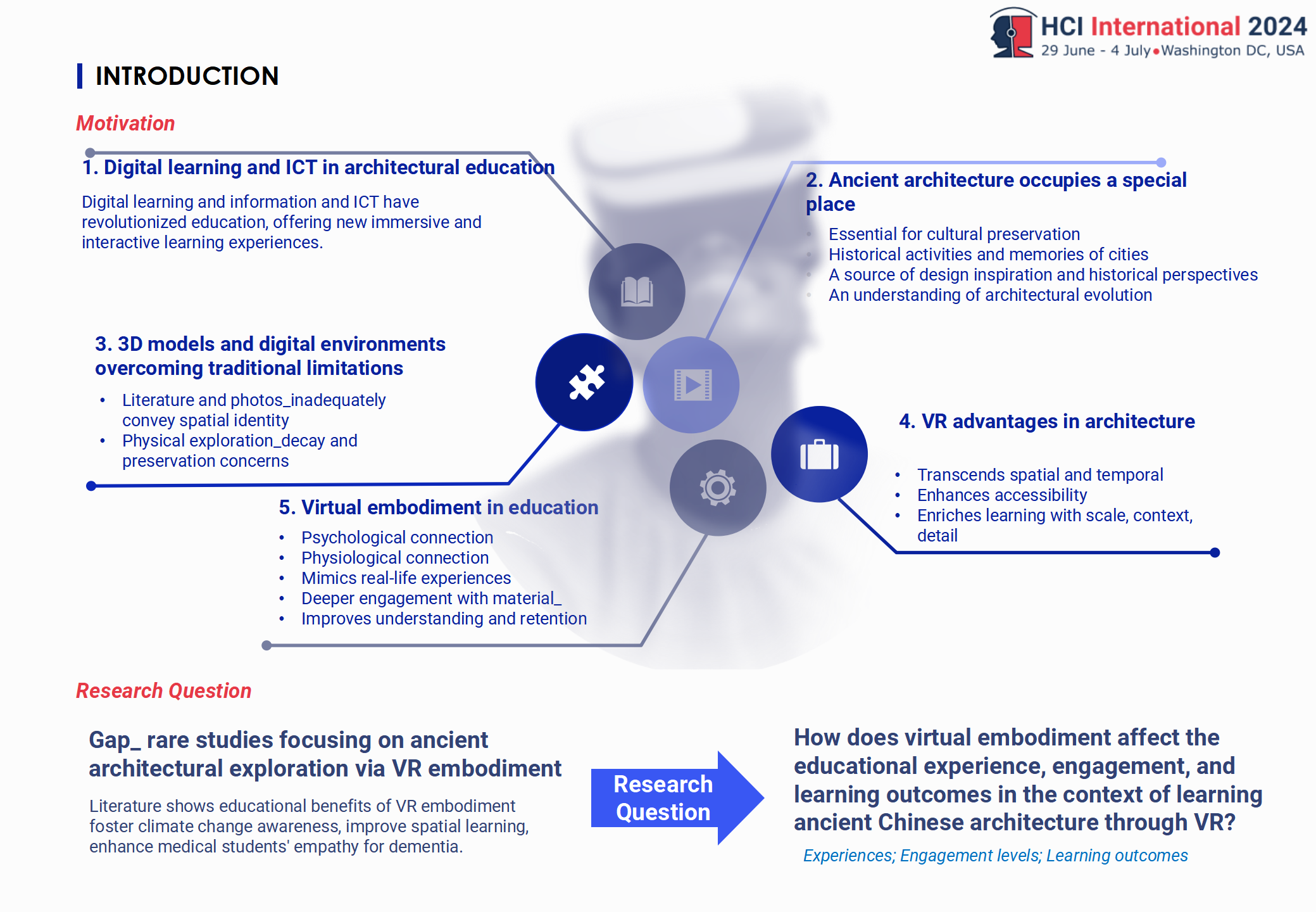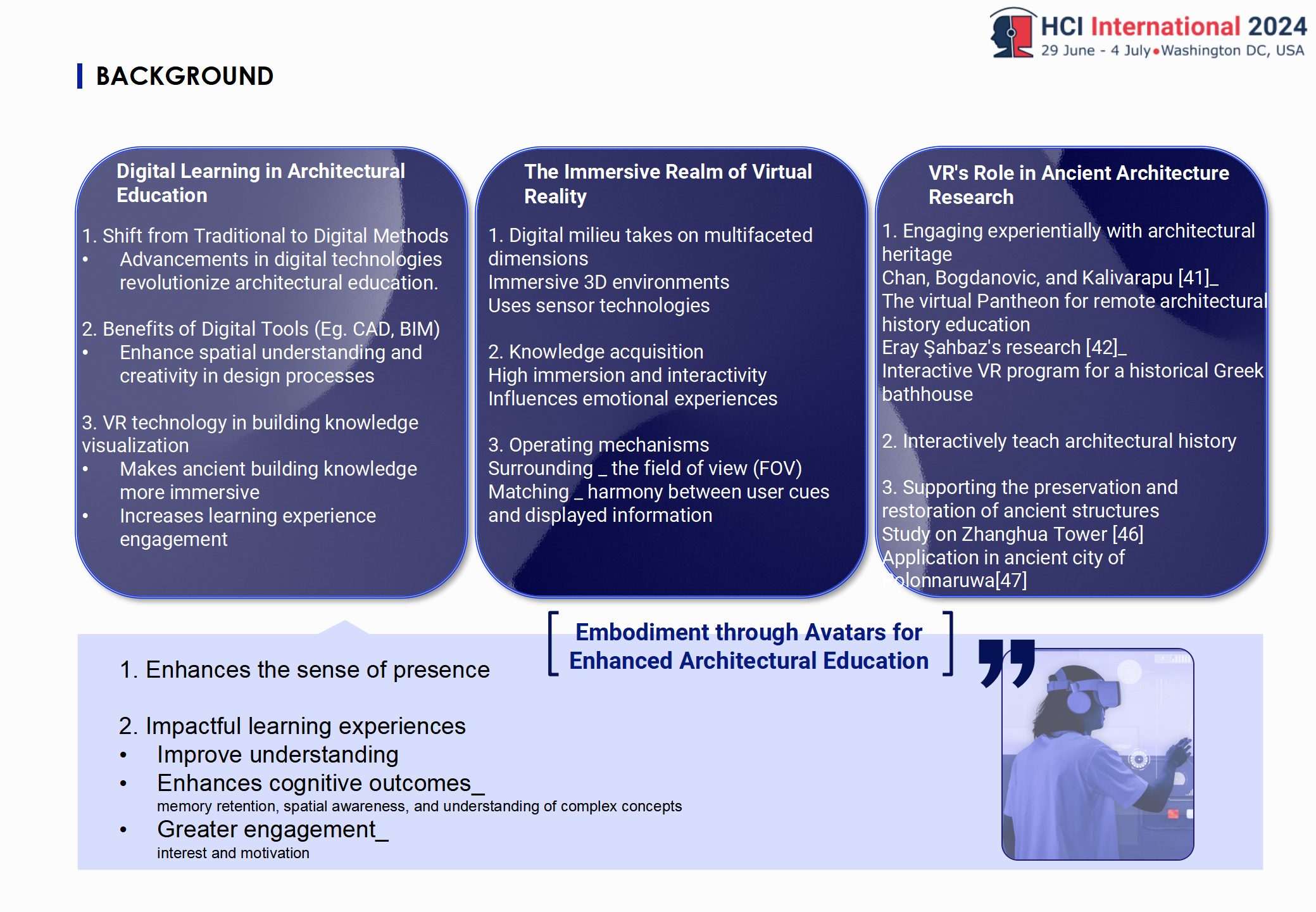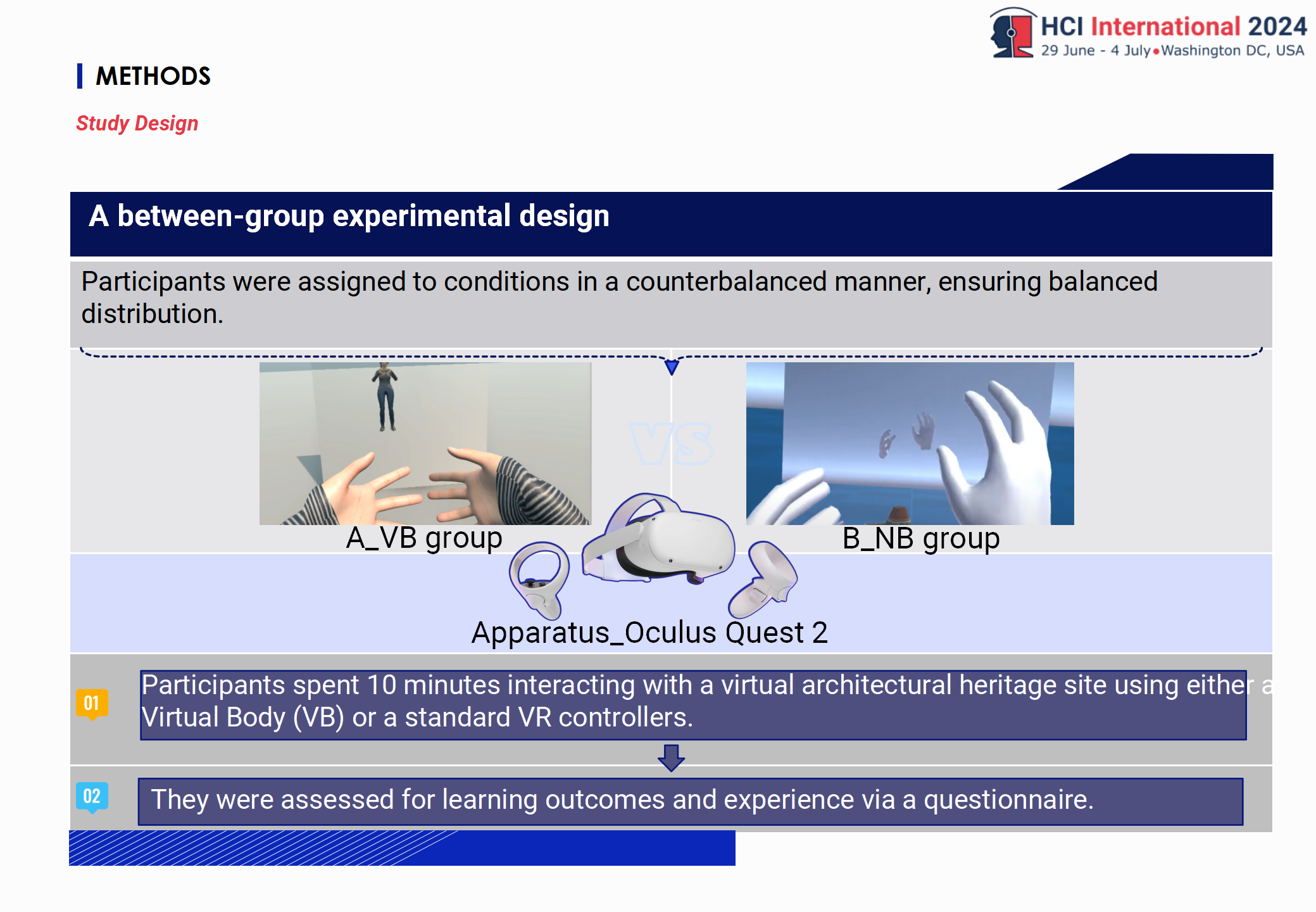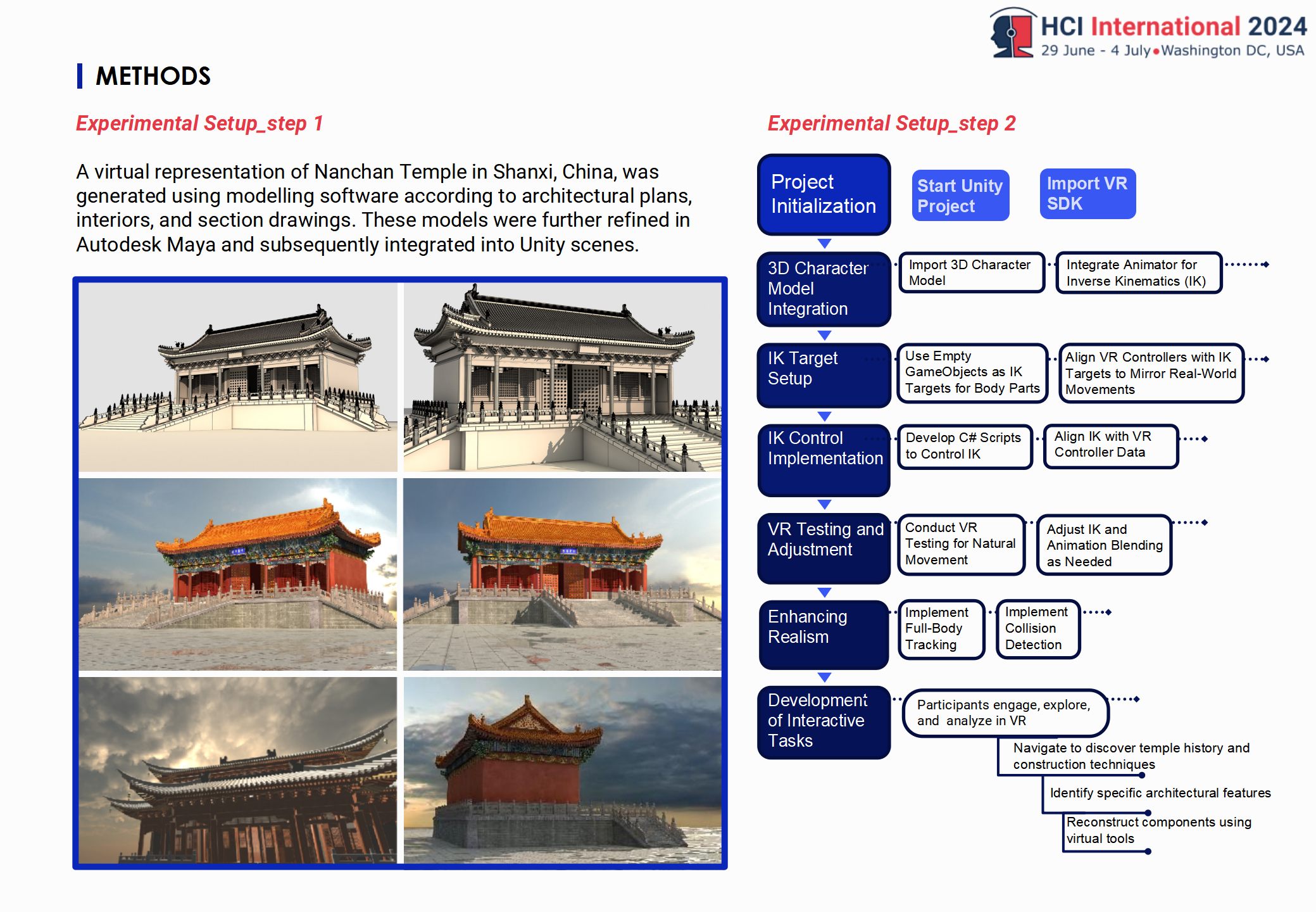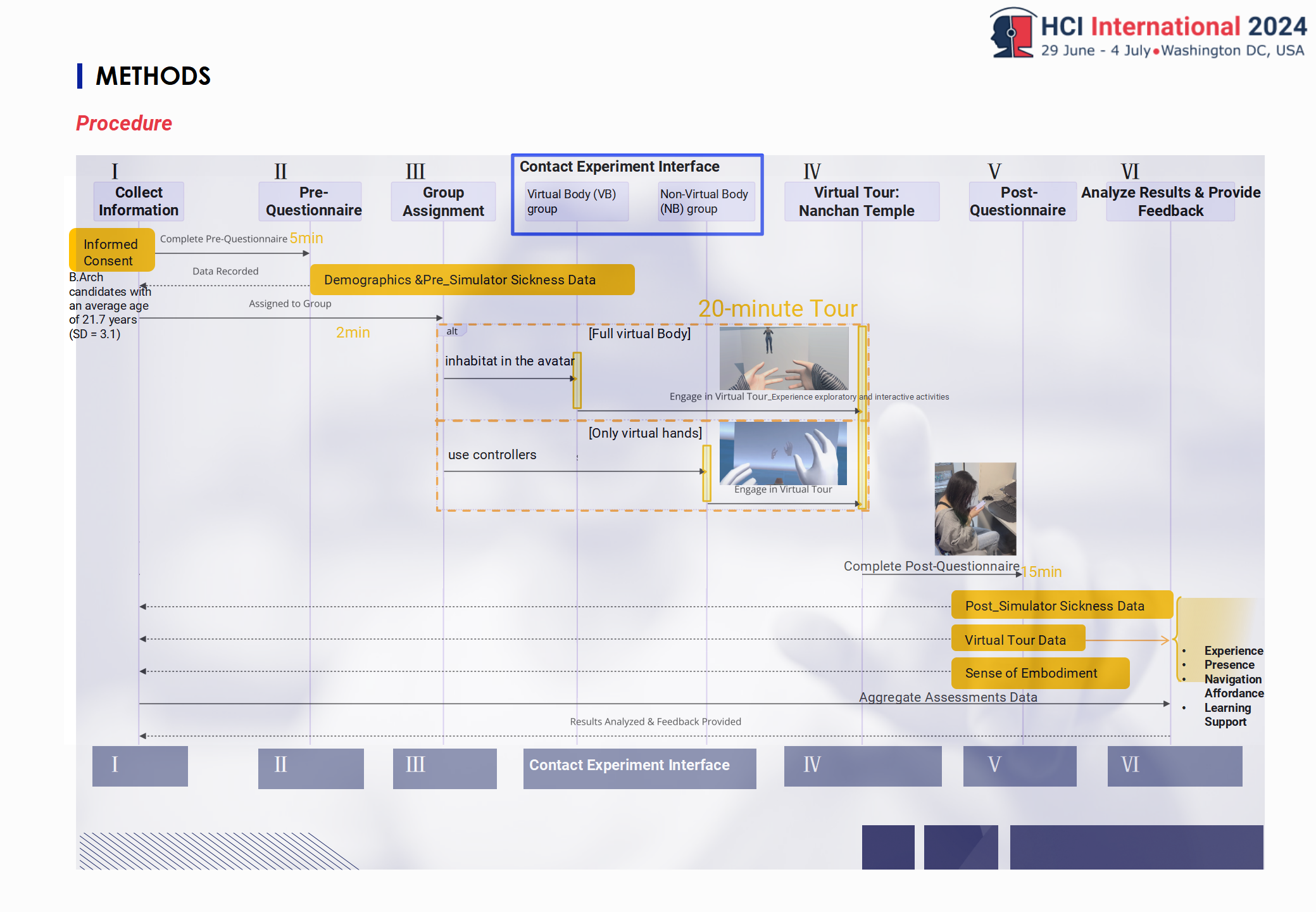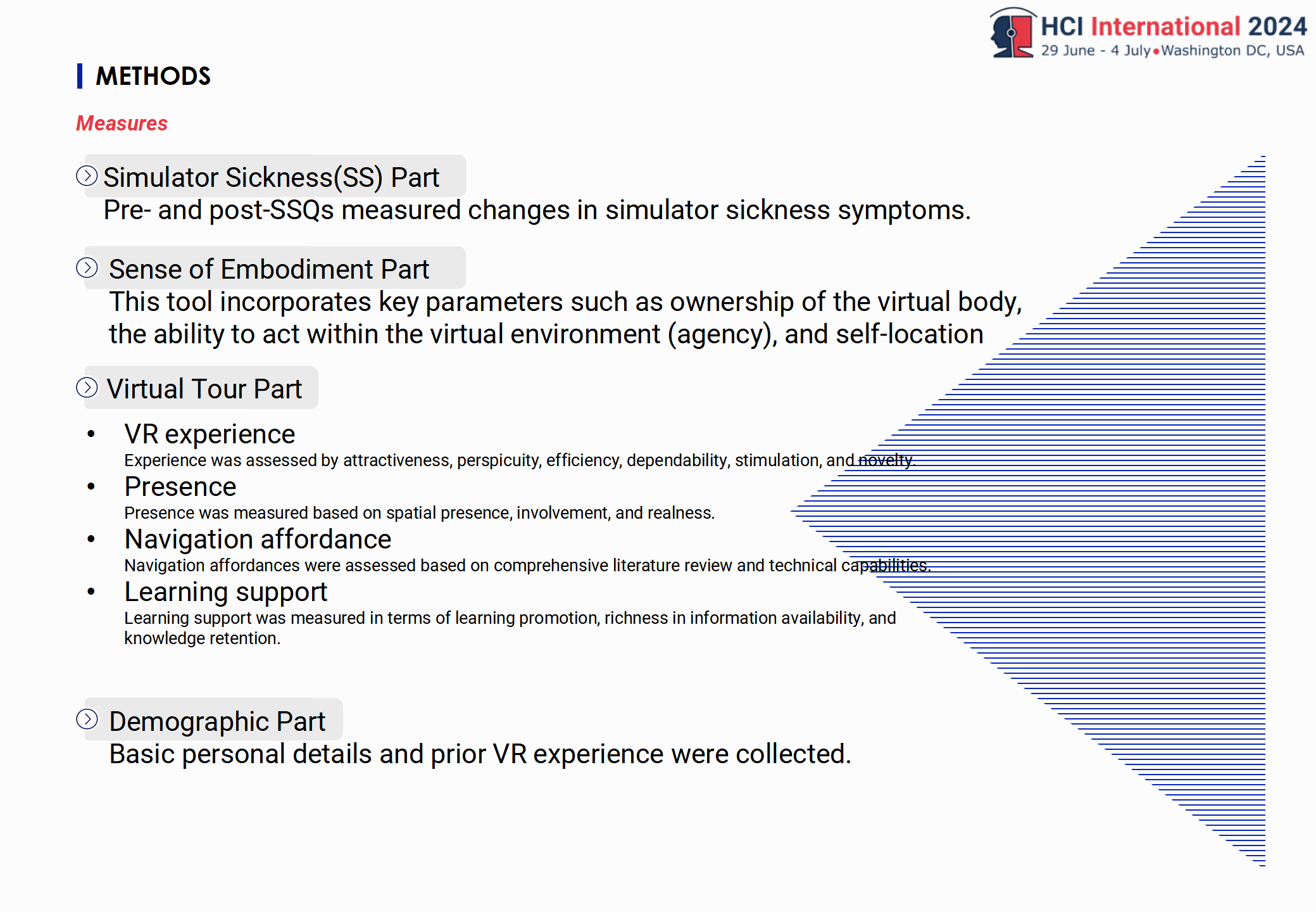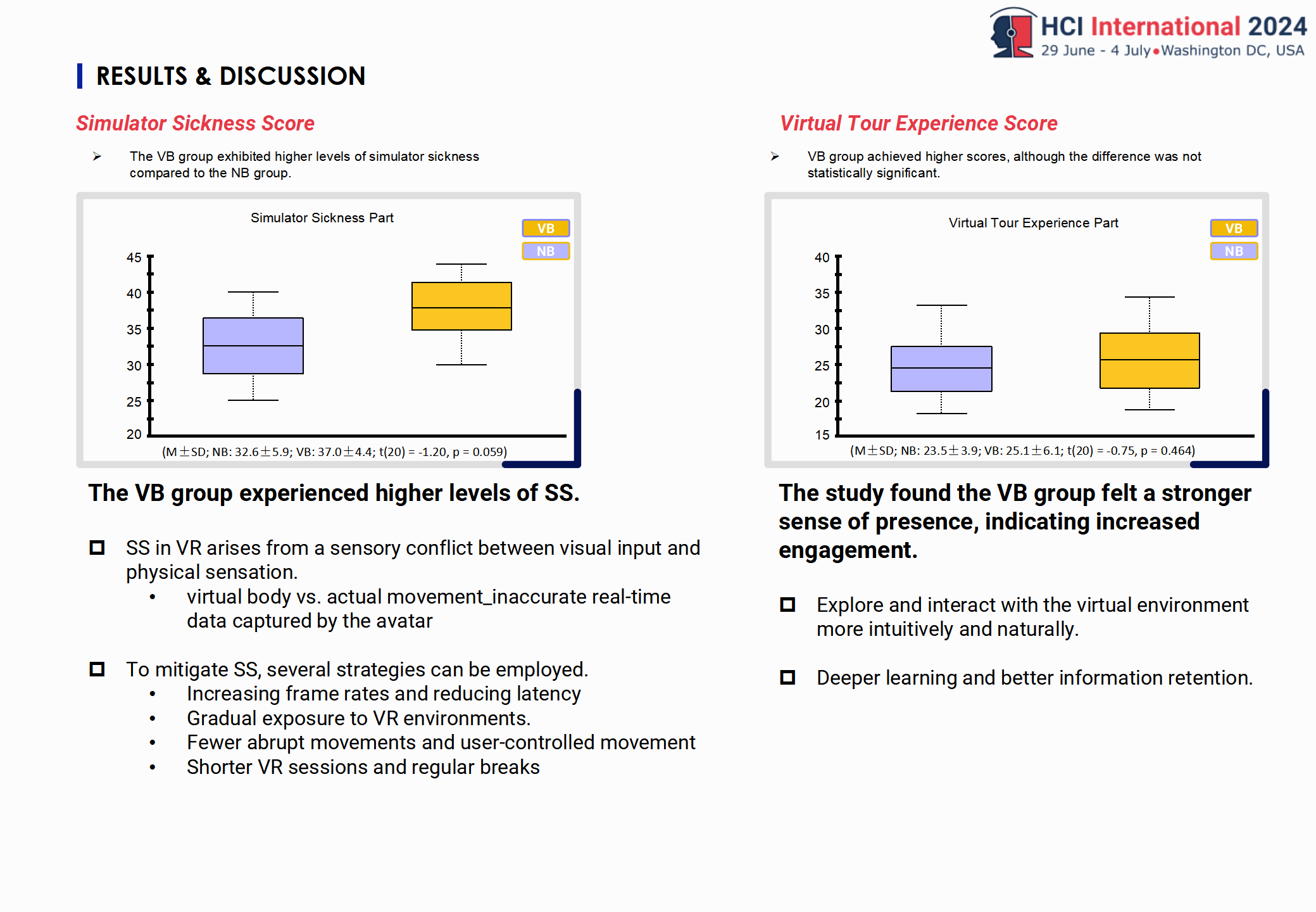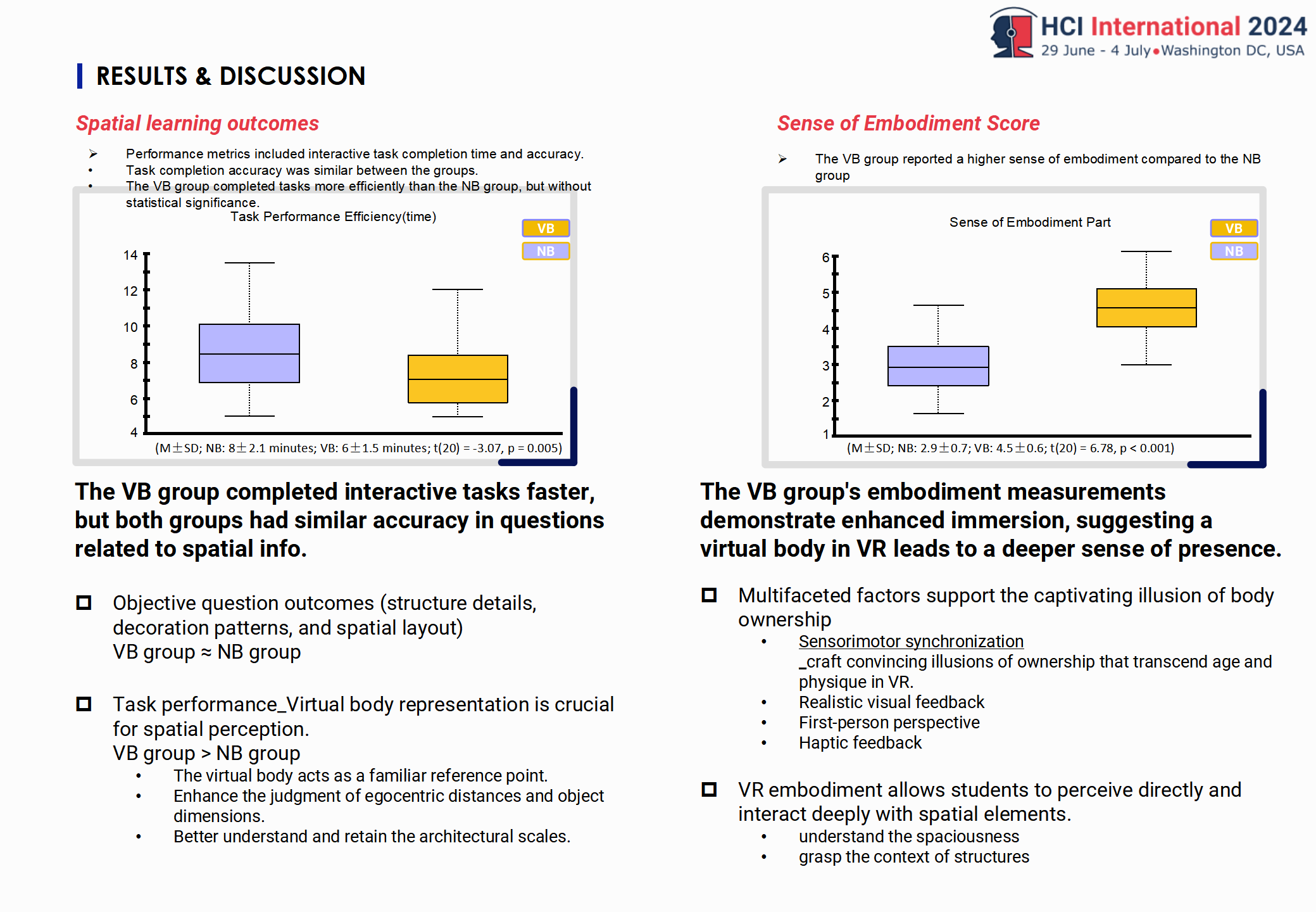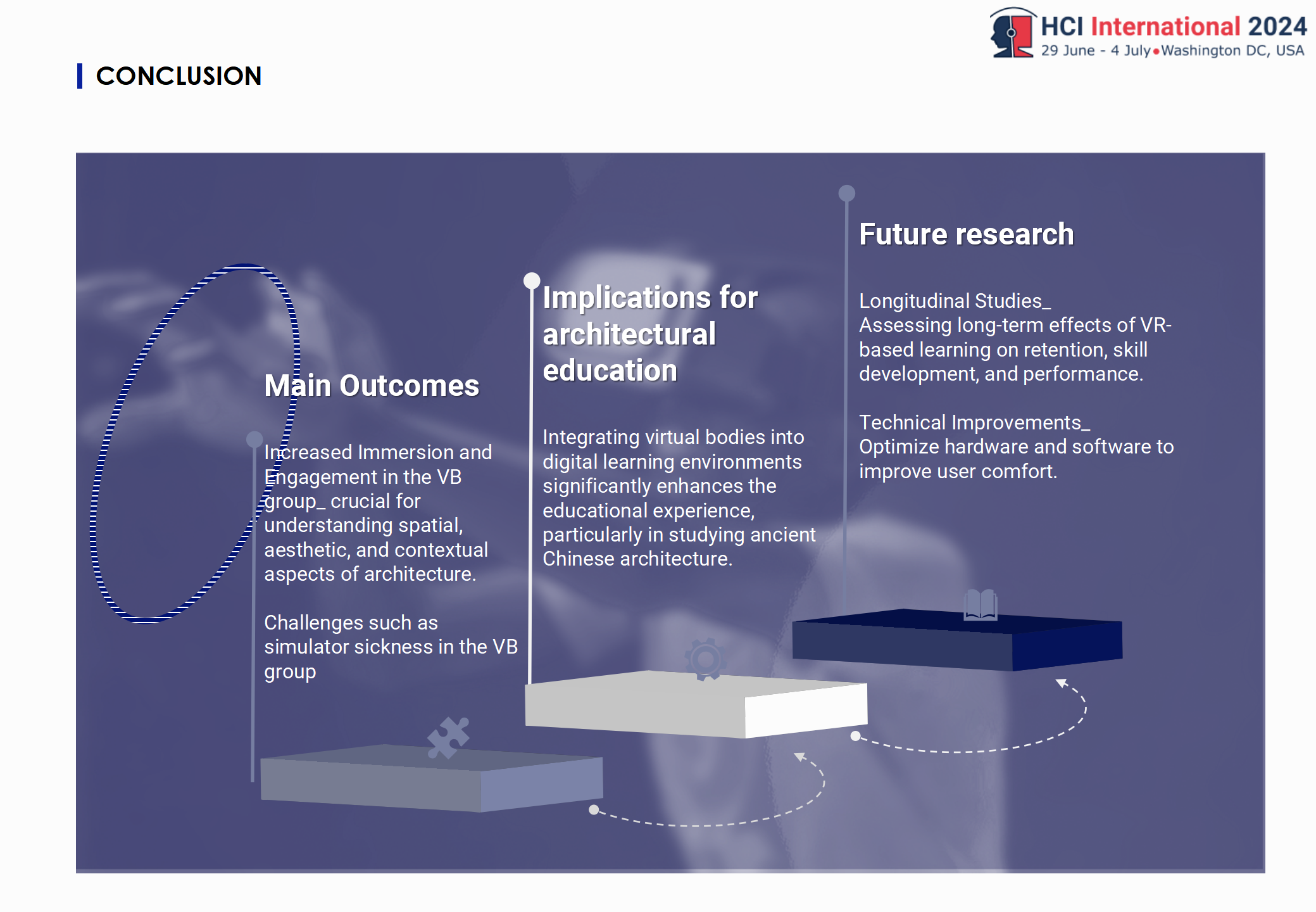Virtual Body Interface:
Assessment of Spatial Learning through Virtual Embodiment in Tang Dynasty Temple Exploration
This project investigates how virtual embodiment affects learning outcomes in architectural education. Using a detailed VR reconstruction of the Tang Dynasty’s Nanchan Temple, architecture students were divided into two groups: one navigated the space with fully embodied avatars, while the other used standard VR controls without a visible body. The study assessed immersion, spatial understanding, and task performance through questionnaires and interactive activities.
Results show that the embodied group experienced a stronger sense of presence, improved spatial perception, and greater engagement, demonstrating that embodying a virtual body transforms passive viewing into active exploration. While simulator sickness was slightly higher in the embodied group, the findings highlight the potential of embodied VR to enhance the learning of ancient architectural heritage through deeper cognitive and experiential involvement.
Type of work Individual project
